September 10, 2024 · 13 min read
Agile vs. Waterfall: Choosing the Right Methodology for Enterprise Projects

Shaimaa Badawi
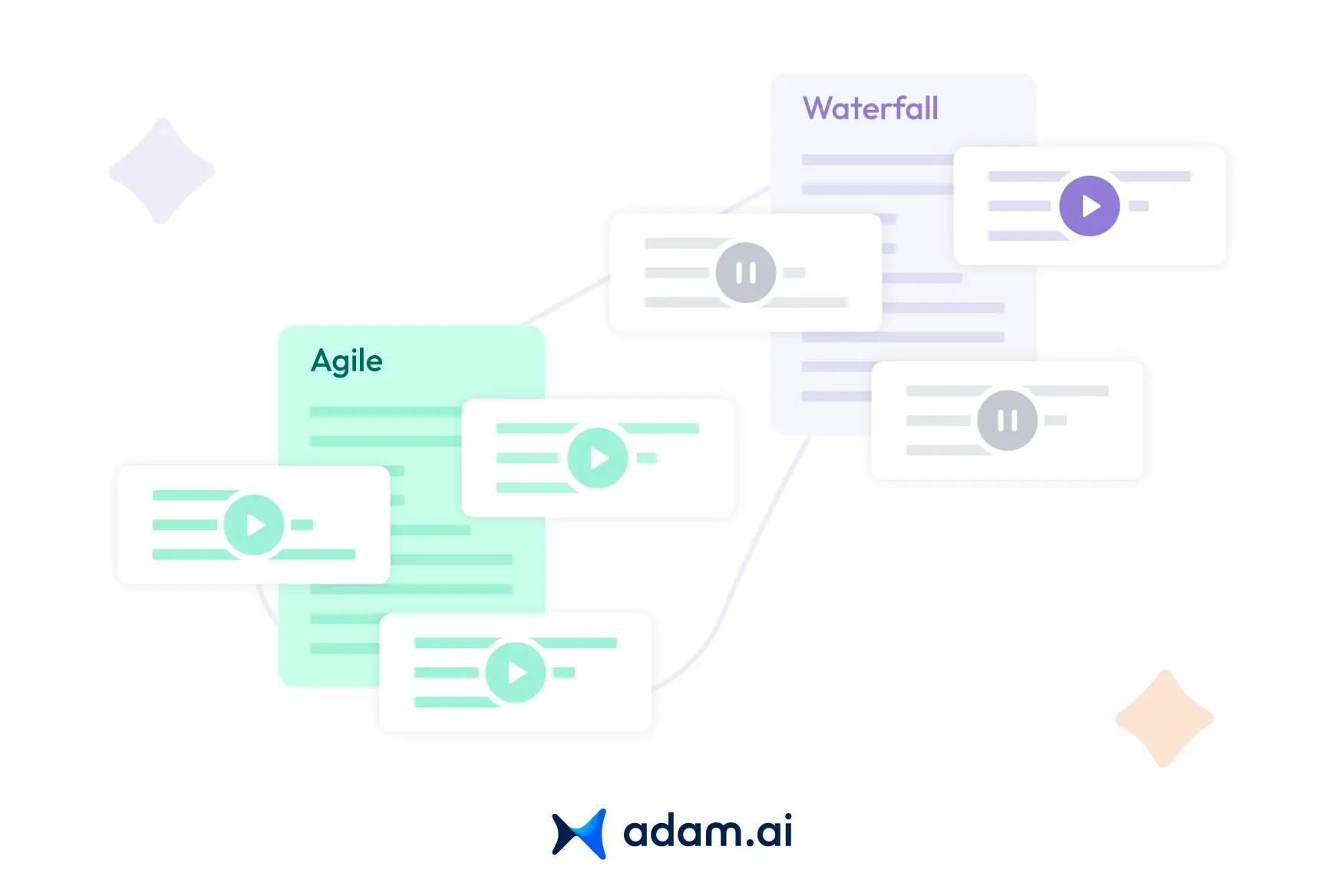
Choosing between Agile and Waterfall methodologies can be a pivotal decision for enterprises managing complex projects. In this article, we dive deep into the strengths and weaknesses of both frameworks, helping you understand which one is best suited for your business needs. From analyzing project timelines to assessing adaptability, we’ll guide you through everything you need to know about Agile vs. Waterfall, ensuring your project strategy aligns with your goals.
What is Agile methodology?
Agile methodology is a flexible and iterative approach to project management that breaks down tasks into smaller segments, often referred to as sprints. This allows teams to quickly adapt to changes, prioritize customer needs, and continuously improve throughout the project's life cycle. Agile focuses on collaboration across cross-functional teams and encourages regular feedback, enabling teams to deliver incremental results more rapidly and efficiently.
The principles of Agile promote adaptability, continuous delivery of value, and responsiveness to evolving project requirements. With a heavy emphasis on communication and collaboration, Agile methodologies such as Scrum, Kanban, and Extreme Programming (XP) are widely adopted across industries, particularly in software development but also extending to other project types, including marketing and product development.
What is Waterfall methodology?
Waterfall methodology is a linear and sequential approach to project management where each phase must be completed before moving to the next. It is structured around distinct stages, typically starting with requirements gathering, followed by design, implementation, testing, deployment, and maintenance. This rigid progression means that once a phase is completed, it is challenging to revisit or make changes without significant rework.
Waterfall is best suited for projects with well-defined objectives, stable requirements, and a clear scope. Its strengths lie in providing a detailed upfront plan, allowing teams to follow a structured timeline, and often making it easier to manage large, complex projects that require a lot of documentation.
What are the key differences between Agile and Waterfall methodologies?
The key differences between Agile and Waterfall methodologies revolve around their structure, flexibility, and approach to project management:
1. Project structure
- Agile: Agile follows an iterative and incremental approach. Projects are broken down into smaller sprints or cycles, allowing teams to continuously deliver working components and make adjustments based on feedback.
- Waterfall: Waterfall is a linear, sequential model where each phase must be completed before moving to the next. Once a phase is finished, revisiting it is challenging and usually discouraged.
2. Flexibility
- Agile: Agile is highly flexible. It allows for changes and adjustments at any stage of the project based on client feedback or evolving requirements.
- Waterfall: Waterfall is more rigid, with minimal flexibility. Once a project plan is set and approved, making changes can be time-consuming and expensive.
3. Client involvement
- Agile: Agile methodologies encourage constant collaboration with stakeholders throughout the project. Clients provide regular feedback during the sprints, enabling teams to adjust as needed.
- Waterfall: Client involvement is typically limited to the beginning (requirements gathering) and the end (delivery and review) of the project. This can sometimes lead to misaligned expectations or unmet requirements.
4. Delivery
- Agile: Agile focuses on continuous delivery of functional components. Workable product versions are released at the end of each sprint.
- Waterfall: Waterfall delivers the final product only at the end of the project, which means there are no incremental releases along the way.
5. Risk management
- Agile: Agile reduces risk by addressing issues and implementing changes early in the process. With each sprint, teams reassess and adjust based on any challenges faced.
- Waterfall: Waterfall can have higher risks due to its linear structure. Problems may only surface in later stages, making it harder and costlier to fix.
6. Documentation
- Agile: Agile values working software over comprehensive documentation. While documentation exists, it is often lighter and created as needed to support development.
- Waterfall: Waterfall requires extensive documentation at every stage, making it easier to track progress and meet regulatory requirements but slowing down the process.
7. Team collaboration
- Agile: Agile thrives on collaboration and communication among cross-functional teams. Daily meetings and frequent interactions are integral to its success.
- Waterfall: Waterfall operates more in silos, with teams often working on different project phases independently with less frequent communication.
When should enterprises choose Agile for project management?
Enterprises should choose Agile for project management under the following circumstances:
- Projects with evolving requirements: Agile is ideal for projects where the requirements are expected to change frequently or are not fully defined at the start. Since Agile focuses on iterative development, it allows teams to adapt to changing customer needs, market conditions, or stakeholder feedback throughout the project lifecycle.
- Need for speed and flexibility: If the enterprise needs to deliver functional components quickly and requires flexibility to adjust plans mid-project, Agile is the best fit. This methodology allows teams to release increments at the end of each sprint, ensuring faster time-to-market and the ability to pivot quickly based on feedback.
- Emphasis on customer collaboration: Enterprises should opt for Agile when close collaboration with stakeholders is critical. Agile thrives on continuous customer involvement, where regular feedback helps refine the product and ensures it meets expectations.
- Complex projects with uncertainty: Agile is well-suited for projects that involve a high degree of complexity or uncertainty. It breaks down large, complex tasks into manageable sprints, which makes it easier to identify and address risks early in the process.
- Cross-departmental collaboration: Enterprises that need strong collaboration between various departments (e.g., development, marketing, and sales) benefit from Agile’s framework. It encourages frequent communication and collaboration across teams to ensure alignment with project goals.
- Desire for continuous improvement: If an enterprise is focused on improving processes and delivering incremental improvements, Agile’s emphasis on retrospectives and continuous feedback makes it a perfect choice. Teams can reflect on their performance at the end of each sprint and implement changes to optimize the workflow.
- Shorter delivery cycles: When an enterprise aims to deliver a minimum viable product (MVP) or roll out incremental features in shorter cycles, Agile offers the structure needed for quick iterations and frequent releases. This is especially beneficial for competitive industries that demand rapid innovation.
- Uncertain budget and timelines: Agile can be advantageous for projects with flexible timelines and budgets, where the final scope may evolve. It allows teams to work on high-priority tasks first, which can lead to early delivery of key features, even if the full project is still in progress.
When is the Waterfall methodology the best fit for enterprise projects?
The Waterfall methodology is the best fit for enterprise projects under the following circumstances:
- Clearly defined requirements: Waterfall is ideal for projects where the requirements are well-documented and unlikely to change throughout the project. If all the project goals, timelines, and deliverables are clearly understood from the start, Waterfall provides a structured approach to deliver these results without requiring adjustments.
- Projects with fixed budgets and timelines: Waterfall is highly suited for projects with strict budgets and deadlines. Since the entire scope of work is planned in advance, it is easier to estimate costs and timeframes accurately. This approach works well for projects that need predictability and control over finances and scheduling.
- Simple and predictable projects: For projects with low complexity and little uncertainty, Waterfall offers a straightforward approach. If the project’s path is predictable and there are few unknowns, Waterfall’s sequential structure ensures that each phase is completed before moving on, reducing the chance of scope creep or unexpected challenges.
- Regulated or compliance-driven projects: Waterfall is a good fit for industries that require thorough documentation and adherence to specific regulations, such as healthcare, finance, or construction. The structured, step-by-step nature of Waterfall ensures that all phases are well-documented and comply with necessary legal, safety, or regulatory requirements.
- Stable environments: In projects where the business environment is stable and external factors (such as market changes or evolving customer needs) are not a concern, Waterfall's linear process helps maintain focus. The method works well when there’s no need for frequent adjustments based on external conditions.
- Less customer involvement: If customer involvement is minimal after the initial project requirements are gathered, Waterfall works well. Waterfall projects typically have fewer touchpoints with stakeholders throughout the development process, as the majority of decisions are made early on and the focus shifts toward executing the plan.
- Integration-heavy projects: For projects that involve integrating with other systems or software, Waterfall’s emphasis on thorough upfront planning and design can reduce risks. When integrating with legacy systems or other complex platforms, Waterfall helps ensure that all requirements are documented and met before the development begins.
- Mission-critical projects: Projects where failure is not an option, such as large-scale infrastructure projects or aerospace development, often require Waterfall’s rigid, methodical approach. The structured phases ensure that each step is validated before moving to the next, minimizing risks in projects that cannot afford mistakes or delays.
Can Agile and Waterfall coexist in hybrid project management environments?
Yes, Agile and Waterfall can coexist in hybrid project management environments, and this combination is often referred to as a hybrid methodology. Enterprises adopt hybrid project management approaches when different aspects of a project benefit from the strengths of both Agile and Waterfall. Here’s how and why they can coexist effectively:
1. Complex projects with diverse requirements
In large-scale projects where some components have fixed, clearly defined requirements while others require flexibility, a hybrid approach can be beneficial. For example, a project may use Waterfall for hardware development (where detailed planning and linear phases are essential) and Agile for software development (where iterative updates and customer feedback are necessary).
2. Combining structure and flexibility
Waterfall brings structure, predictability, and comprehensive documentation, making it ideal for stages such as initial planning, budgeting, and risk assessment. Agile, on the other hand, offers flexibility, adaptability, and continuous feedback, which helps in parts of the project that require frequent changes and rapid iterations. A hybrid model allows teams to leverage the strengths of both, ensuring stability in fixed elements while adapting to changes in more fluid aspects of the project.
3. Different teams or departments
In large enterprises, different departments or teams might operate more efficiently using different methodologies. For example, a finance team might follow Waterfall to adhere to fixed timelines and budgetary constraints, while a development team uses Agile to quickly iterate and respond to user needs. A hybrid approach ensures that each team can work in the way that suits them best while still contributing to the overall project success.
4. Stages of the project lifecycle
Some enterprises choose to use Waterfall during the initial stages of the project, where scope definition, feasibility analysis, and high-level planning take place, and then switch to Agile for the execution phase. This can be particularly useful when strategic alignment is needed at the outset, but flexibility is required during product development or deployment stages.
5. Regulatory or compliance considerations
Projects in highly regulated industries may use Waterfall for the documentation-heavy aspects that need to meet strict compliance or legal requirements, while employing Agile for areas that allow more innovation and adaptation, such as user interface development or marketing campaigns.
6. Customizing for stakeholder needs
In projects with diverse stakeholder groups, a hybrid approach can address the varying needs for communication and control. Stakeholders who prefer well-documented progress and detailed timelines may be more comfortable with the Waterfall side, while those who seek faster delivery of features and ongoing feedback loops may appreciate the Agile portions.
7. Best of both worlds
By integrating Agile and Waterfall in a hybrid approach, enterprises can benefit from the following:
- Predictability in budget and timelines from the Waterfall side.
- Flexibility and quick responsiveness to changes through Agile.
- Cross-departmental collaboration, ensuring each part of the organization is aligned with its preferred working style.
- Risk mitigation, as Waterfall provides structure while Agile helps to adapt quickly to unforeseen challenges or evolving business needs.
Example of hybrid usage
- Agile-Waterfall hybrid: In software development, teams can use Agile for coding and testing sprints, enabling quick iterations based on user feedback, while simultaneously following Waterfall for regulatory documentation or system integration, where detailed, sequential steps are required.
How does Agile vs. Waterfall impact project timelines and deliverables?
The impact of Agile vs. Waterfall methodologies on project timelines and deliverables varies significantly due to the fundamental differences in how each methodology approaches planning, execution, and delivery.
1. Project timelines
- Waterfall timelines: In Waterfall methodology, the project timeline is typically linear and sequential, with each phase of the project (such as requirements gathering, design, development, testing, and deployment) completed in a strict order before moving on to the next phase. This approach emphasizes predictability and detailed upfront planning, with timelines often established at the beginning of the project. Waterfall timelines are typically longer, as each phase must be fully completed before the next begins. Any delays in one phase can cause cascading delays throughout the project, making it harder to adjust timelines mid-project.
- Example: If a project is expected to take 12 months, each phase (requirements, design, development, testing, etc.) is assigned a specific duration. Delays in one phase (e.g., design takes longer than expected) can delay the entire project.
- Agile timelines: Agile projects follow a more iterative and incremental approach, breaking the project into sprints or iterations, each delivering a working product or feature. Timelines in Agile are generally shorter and more flexible, with each sprint typically lasting between two to four weeks. Agile is designed to be adaptive, so teams can adjust their priorities and timelines based on ongoing feedback. This means that while initial delivery might happen faster, the project as a whole could evolve over time, with more continuous delivery of features.
- Example: In an Agile project, a team might aim to deliver a working feature every two weeks, and the overall timeline is built around this iterative cycle. Delays in one sprint typically don’t impact future sprints, as adjustments are made dynamically.
2. Deliverables
- Waterfall deliverables: In Waterfall, deliverables are typically provided only at the end of the project or after the completion of major milestones. This means that the final product is delivered as a whole, often after months or even years of development. Stakeholders have little visibility into progress until the final delivery, which can be risky if the final product doesn’t meet expectations.
- Example: A software project following Waterfall might deliver a fully developed application after a year of work, with no interim releases or partial product deliveries along the way.
- Agile deliverables: Agile focuses on frequent and incremental delivery of working software or features. After each sprint or iteration, teams produce a functional product or part of the product that can be demonstrated to stakeholders. This allows for continuous feedback and the ability to make adjustments based on user feedback, resulting in a more adaptive and evolving final product. Deliverables are smaller and more frequent, keeping stakeholders more engaged throughout the process.
- Example: In an Agile project, a team might release a new feature or update every two weeks, allowing users and stakeholders to test and provide feedback early and often.
Enhance your project management methodology with adam.ai
Whether your enterprise leans towards Agile or Waterfall, having a robust meeting management platform like adam.ai ensures seamless project oversight and execution. With powerful features that support both iterative and structured methodologies, adam.ai is designed to optimize team collaboration, track actions, and improve decision-making processes at every stage of your project lifecycle.
Here’s how adam.ai can elevate your project management approach:
1. Agenda and content management: Effortlessly build and customize agendas that fit the specific needs of Agile sprints or Waterfall milestones. Organize project documents, timelines, and goals in one accessible place, ensuring everyone stays aligned, regardless of methodology.
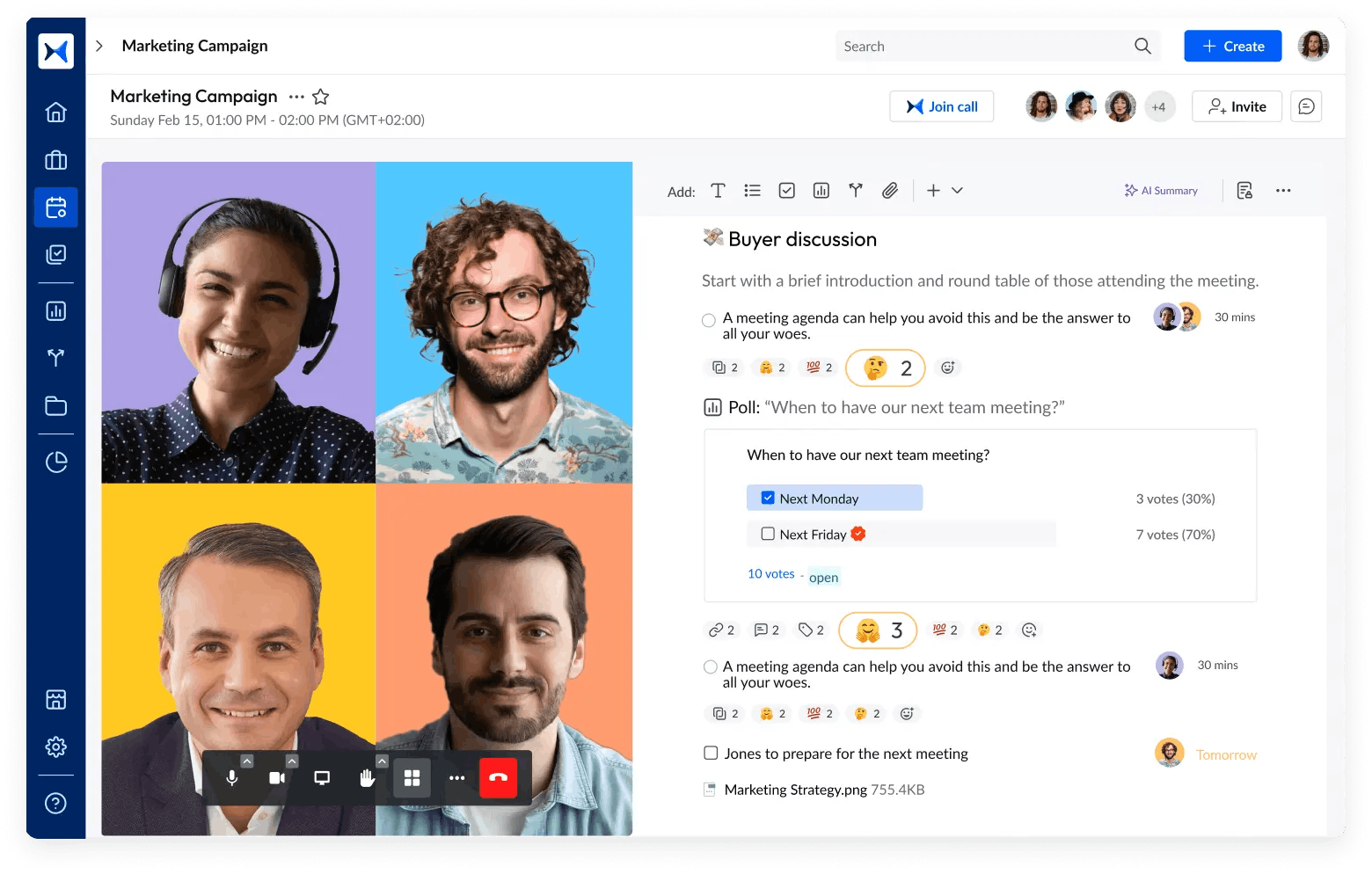
2. Action tracking and accountability: Assign tasks, monitor progress, and keep teams accountable throughout project phases. adam.ai’s tools help ensure all decisions and tasks are clearly documented and tracked, promoting transparency and responsibility across Agile and Waterfall projects.
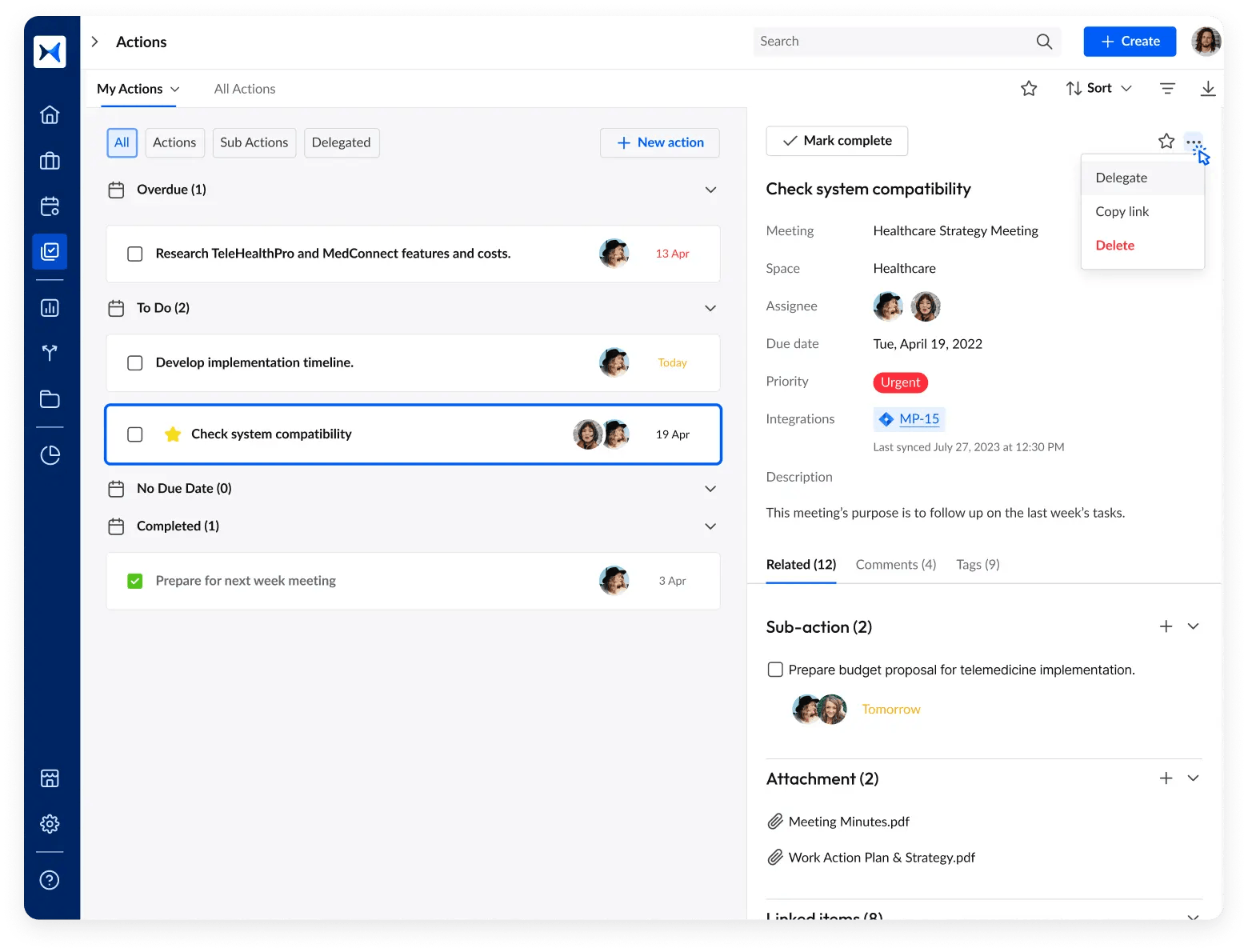
3. Multi-project space organization: Manage complex portfolios by organizing projects into dedicated spaces, whether you're managing Agile teams or sequential Waterfall steps. This keeps everything streamlined, allowing you to switch between projects and methodologies effortlessly.
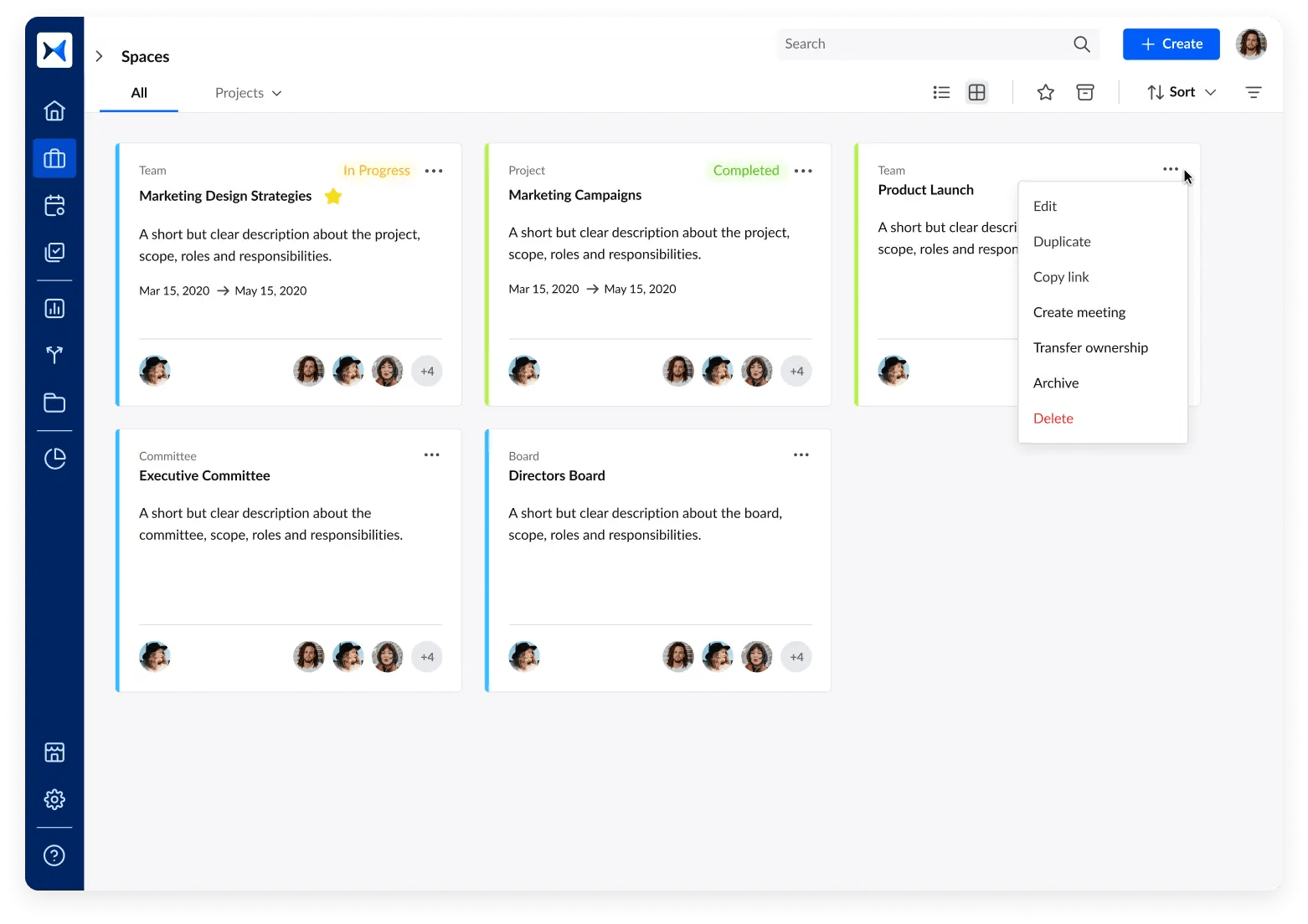
4. Automated meeting minutes and documentation: Save time by automatically capturing key discussions, decisions, and action points during meetings. Whether in a daily Agile stand-up or Waterfall phase review, adam.ai provides detailed, shareable documentation for future reference.
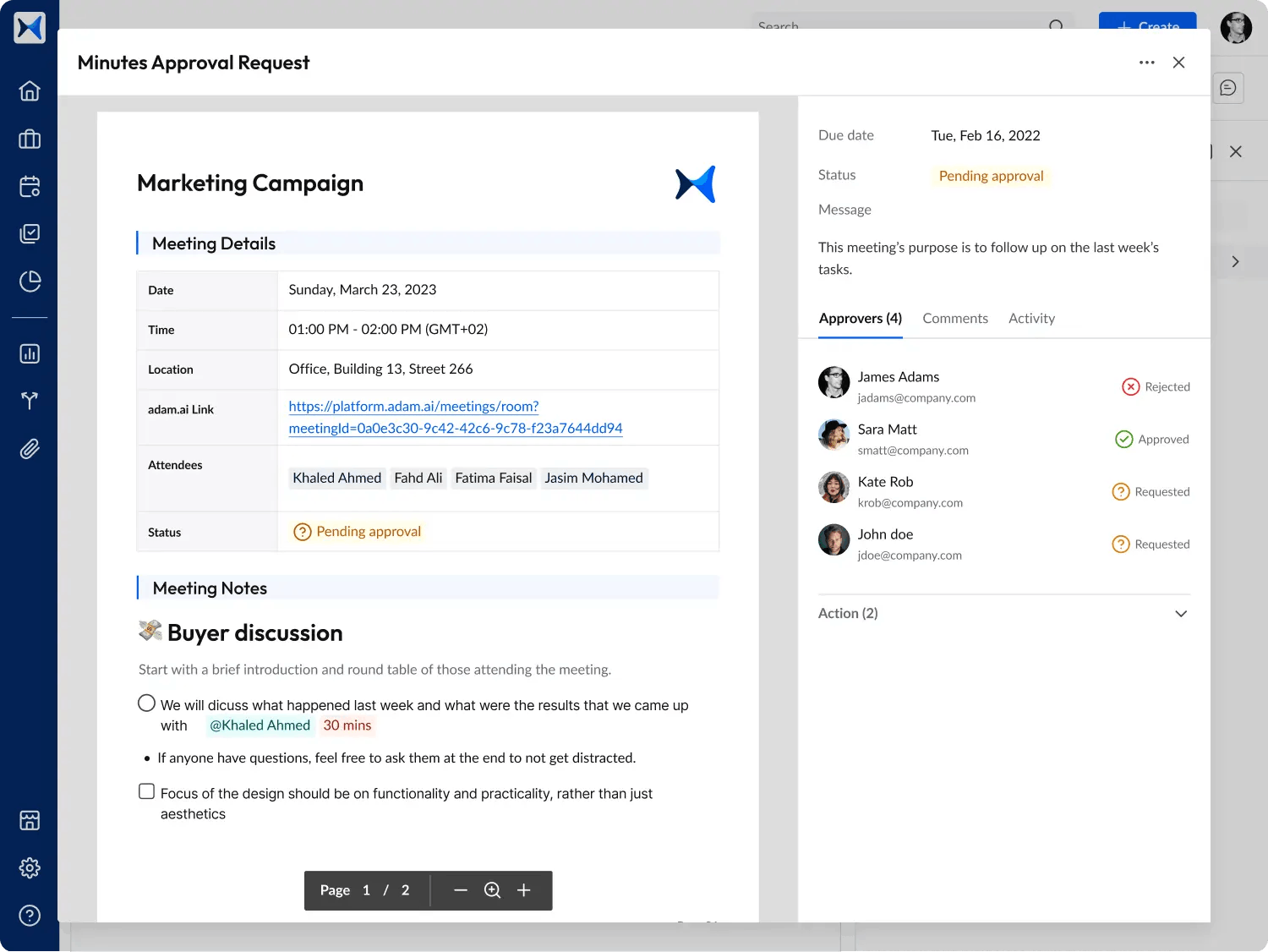
5. Voting and decision management: Simplify decision-making by conducting real-time polls and recording votes directly within the platform. This feature supports consensus-driven decisions in Agile teams as well as formal approvals in Waterfall projects.
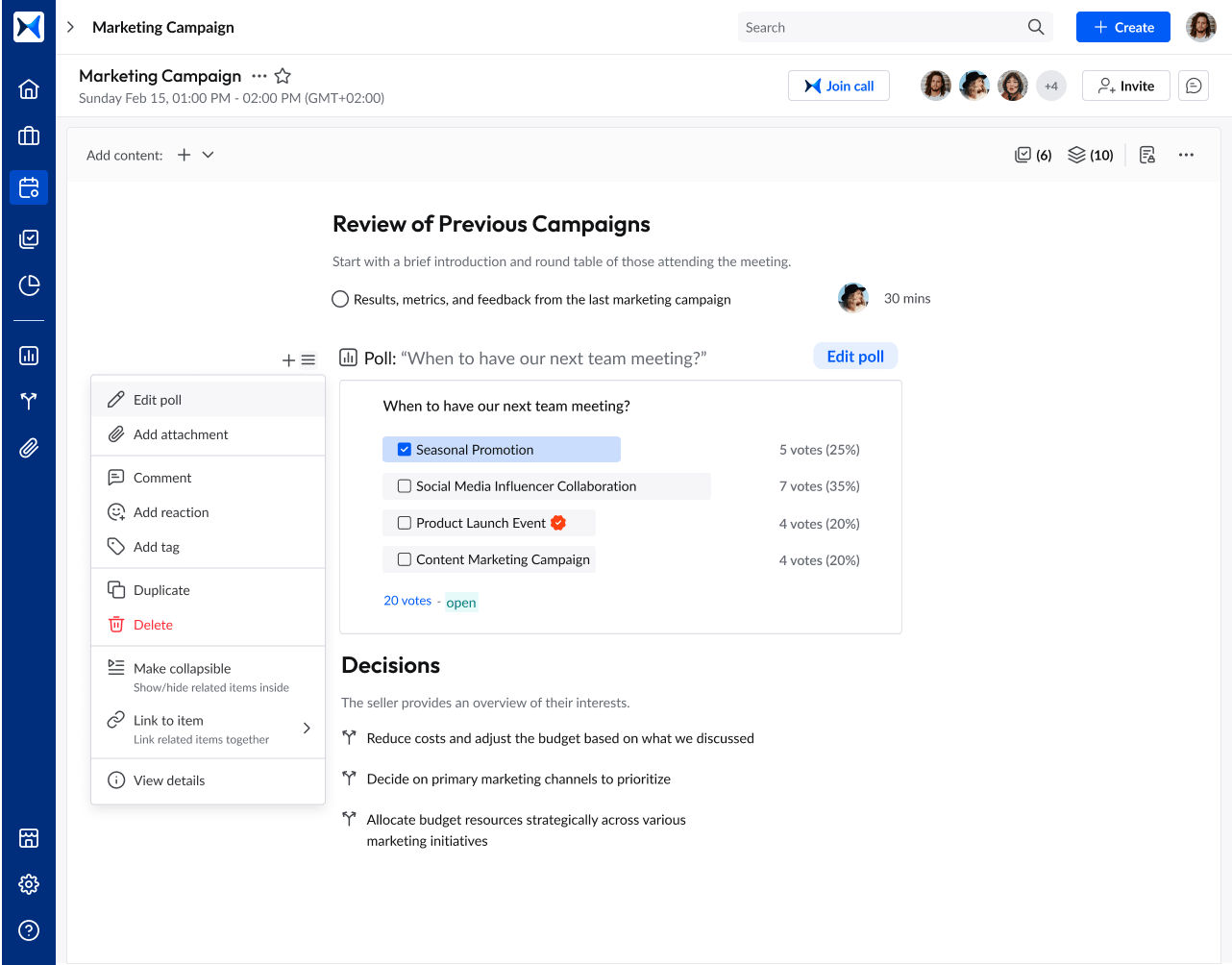
6. Analytics dashboard for strategic insights: Gain valuable insights into team performance, project progress, and meeting effectiveness with adam.ai’s analytics dashboard. Whether tracking sprint velocities or milestone achievements, these data-driven insights empower C-level executives to make informed decisions.
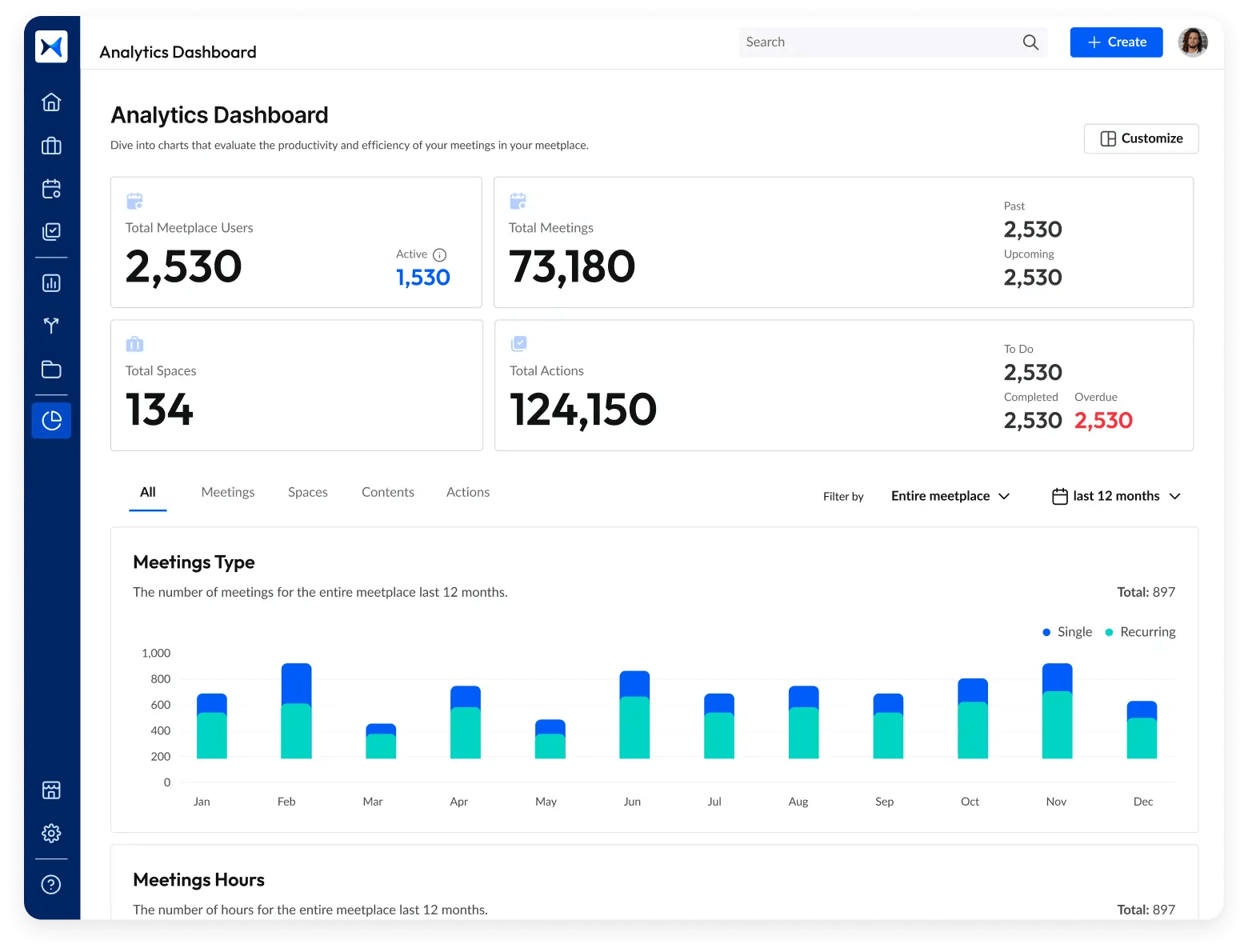
Transform how you conduct critical meetings—From meticulous preparation to effective execution and insightful follow-up, adam.ai integrates comprehensive analytics, full customization, and intuitive interfaces with powerful meeting management tools.
Easy onboarding. Enterprise-grade security. 24/7 dedicated support.
The bottom line
Whether you lean towards Agile’s adaptability or Waterfall’s structured approach, understanding the benefits and challenges of each is crucial for strategic alignment. Leveraging modern tools can further enhance how these methodologies are implemented, ensuring efficient collaboration, accountability, and results.
And while there may be multiple solutions available, here is why adam.ai is the meeting management software platform you can trust:
- adam.ai is one of Atlassian Ventures' portfolio companies.
- In the meeting management software category on G2, adam.ai has been ranked a leader and a high performer for successive quarters in the past years.
- adam.ai has been included in the Forrester Report in the AI-enabled meeting technology landscape.
- adam.ai is trusted and used by powerful teams and organizations worldwide for all types of critical meetings, like board, committee, project management, and business development meetings.
- And most importantly, adam.ai integrates with your existing workflow, is SOC2 compliant, provides dedicated support and success, and has a free trial option.
Subscribe to adam.ai blog
Stay ahead with the latest insights—get our newest blog posts, tips, and updates sent straight to your inbox.